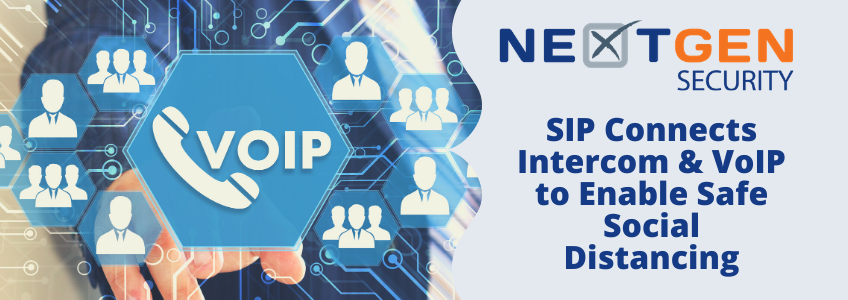As the national stay at home guidelines lift, facilities of all kinds – commercial, industrial, hospitality, retail, houses of worship, and more – are grappling with how to meet the new COVID-19 prevention guidelines.
Places where people worked and gathered with little restriction in the past must now be transformed to facilitate new operational procedures for distancing and communication. Every organization must now work through the logistics of how to implement new measures which will include electronic systems and physical modifications to the building, work environment, shopping experience, and even health care.
With as many changes as will be required, fortunately there are already technology solutions available to enable the plans for businesses to reopen and stay open in a safe manner. Voice communication is a key consideration of nearly every reopening plan. From in-person discussions in the lobby to remote communication between doctors and patients, adjustments planned and implemented.
And when it comes to voice communication, there’s a little-known standard called SIP that enables formerly disparate technologies to work together to improve remote voice and video communication.
SIP, or Session Initiation Protocol, is the backbone of voice over IP, video conferencing, and other methods of communicating across a network. The benefit is that SIP can connect voice over IP (VoIP) telephones to intercom stations located at entrances, in stairwells, and in other places where common or emergency communication may be required.
In the past, a visitor would walk into a building and directly to a reception desk. The reception staff would then verify the intent and needs of the visitor. This situation would allow the lobby area to be accessed freely and for an extended interaction to occur within a now unacceptable distance
By leveraging SIP to connect the VoIP system to the intercom system, the discussion between staff and visitors can be accomplished remotely and securely. Additionally, the visitor can use the intercom station to connect directly to the employee’s desk phone that is expecting them. Higher security and improved distancing are achieved using existing technology to solve the challenge.
For organizations that are consolidating operations, SIP can also enable centralized reception. The reception process can be a virtual experience between the visitor at the door and a remote, secure employee. And the advantages of SIP don’t end there. SIP can also improve safety by allowing the intercom system to broadcast emergency messages to all desk phones within an office or even phones across multiple enterprise locations.
A thorough understanding of your unique challenges matched with an expert knowledge of security, safety, and communication technology can produce a solution that enhances the safety of your staff, visitors, contractors, and property.

